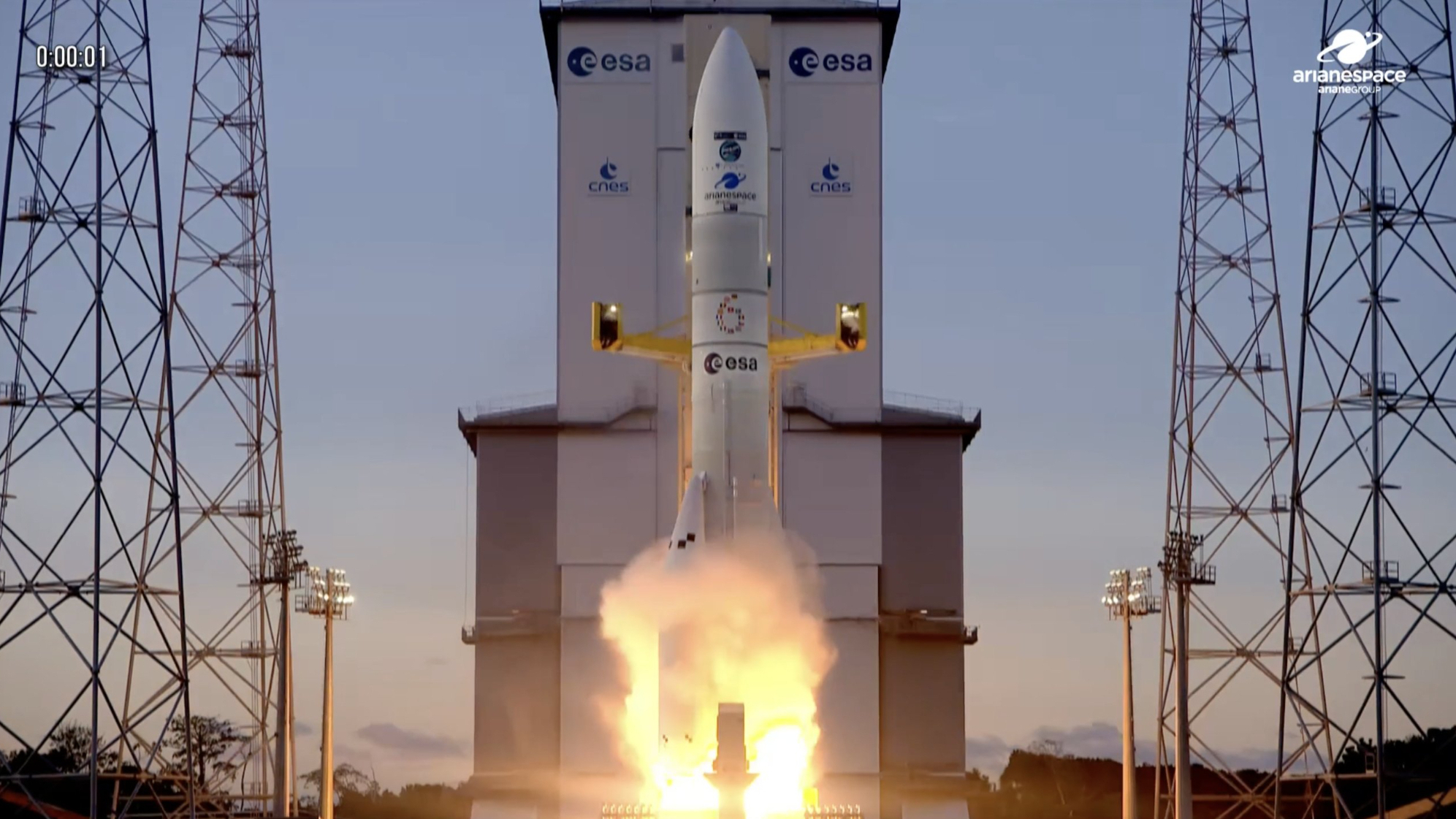NASA's Robotic Moon Mission Spins Wheels
CAPE CANAVERAL -- NASA's plan to send robotic scouts to the moon in advance of astronauts is starting to take shape, but politics and the presidential election are stalling progress.
Congress appears poised to ax most if not all start-up money for an initial lunar mapping mission in 2008 but won't finalize the agency's budget before the election Tuesday.
Outside analysts say NASA is hesitant to draft detailed plans for follow-on flights -- missions key to President Bush's plan to return astronauts to the moon -- until the election is over.
"They are not going to go forward with the vision until they see how the election is going to turn out, and that's true of Congress also," said Paul Spudis, a planetary geologist at Johns Hopkins University who served on the President's Commission on Moon, Mars and Beyond.
"Seriously, their people are running in place and they want to see what's going to happen," Spudis said. "My sense is that we won't actually get moving out on this -- on the detailed architecture and strategy studies -- until that is resolved."
Bush in January outlined a plan to complete the International Space Station and retire NASA's shuttle fleet by 2010. Robotic spacecraft would be sent to the moon to pave the way for astronauts, who would return to the lunar surface between 2015 and 2020.
NASA now plans to spend $5 billion between 2005 and 2020 to launch a dozen robotic missions to the moon, or one per year, beginning in 2008.
Breaking space news, the latest updates on rocket launches, skywatching events and more!
The idea is to have robots map the moon, search for water ice, survey potential landing sites, and test prototypes for oxygen production and electrical power plants, among other things.
The robotic craft also would help determine how to protect human explorers from deadly cosmic and solar radiation they would be exposed to outside Earth's magnetic field.
"When we go back to the moon with humans, we want to be able to do it in the right way," said Richard Vondrak, director of the lunar robotic explorer program at NASA Headquarters in Washington.
"And the robotic missions will provide information and test beds that will prepare us for the return to the moon in the best possible way."
Mapping the moon
NASA already is designing the first of the robotic explorers.
The Lunar Reconnaissance Orbiter would return a global topographical map of the moon, measure deep space radiation in lunar orbit and attempt to find water ice at the lunar poles.
NASA's Lunar Prospector and the Pentagon's Clementine spacecraft yielded evidence in the 1990s of abundant stores of water ice trapped beneath the surface at the poles.
Scientists think humans could convert water ice into oxygen and hydrogen for breathing air as well as rocket propellant for missions to Mars or elsewhere in the solar system.
NASA gathered instrument proposals for the lunar orbiter from aerospace companies, universities and research labs in September. But a decision on which instruments would fly won't be made before late November.
Search for ice
NASA's plans for a second robotic spacecraft, which would launch in 2009, are much less mature. Vondrak said the spacecraft likely would be a lander with instruments that would verify the existence of water ice and measure radiation.
The 10 missions that would follow have yet to be defined.
But Spudis, a lunar geologist who was deputy science team leader for the Clementine mission, said robots would pave the way for human expeditions in a step-by-step fashion.
The aim: develop and deliver the systems that would enable astronauts to use the moon's natural resources to survive on the lunar surface, significantly reducing the need to launch costly resupply missions from Earth.
"In broad terms, what you want to do is to conduct a series of robotic missions that will allow you to design the equipment you need to live on the moon," Spudis said. "And then you launch the equipment and assets that you'll need when you get there."
Budget constraints
The fledgling program is facing severe cuts in Congress.
The House Appropriations Committee cut NASA's entire $70 million request for start-up money in 2005. In the Senate, the appropriations committee slashed all but $20 million. A House-Senate conference committee won't take up the issue until after the election.
Vondrak said NASA is pleased the Senate approved enough money to initiate the program. But he added that the impending budget cut likely would force NASA to either scale back plans for the Lunar Reconnaissance Orbiter or delay its launch until 2009.
In any case, Vondrak said, the robotic missions remain key not only to preparing for human expeditions to the moon but also to future missions to Mars or other places.
"Going to the moon is an important first step in that journey that leads us to further destinations," Vondrak said. "We want to use it as a way to prepare for human exploration beyond the moon."
Published under license from FLORIDA TODAY. Copyright ? 2004 FLORIDA TODAY. No portion of this material may be reproduced in any way without the written consent of FLORIDA TODAY.
Todd Halvoron is a veteran aerospace journalist based in Titusville, Florida who covered NASA and the U.S. space program for 27 years with Florida Today. His coverage for Florida Today also appeared in USA Today, Space.com and 80 other newspapers across the United States. Todd earned a bachelor's degree in English literature, journalism and fiction from the University of Cincinnati and also served as Florida Today's Kennedy Space Center Bureau Chief during his tenure at Florida Today. Halvorson has been an independent aerospace journalist since 2013.
